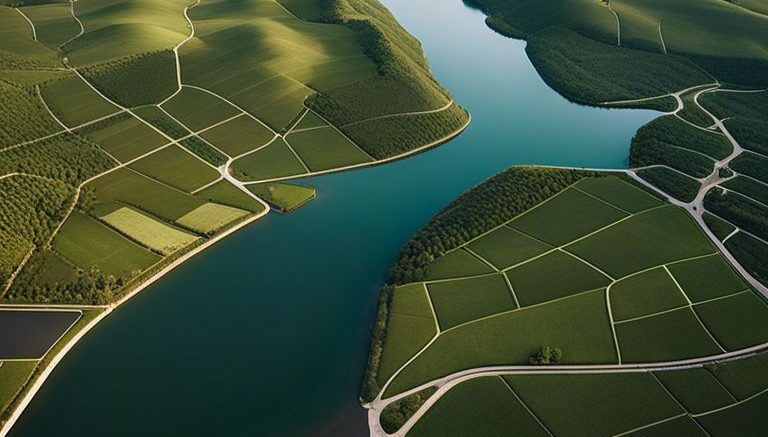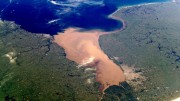Over the years, advancements in technology have revolutionized the way we view and analyze geographical data. ESRI Aerial Maps, powered by satellite imagery, offer a powerful tool for land visualization and analysis. This blog post will examine into the capabilities of ESRI Aerial Maps and how they can be harnessed to provide accurate, detailed, and up-to-date information for various industries such as agriculture, urban planning, environmental monitoring, and more. By leveraging the power of satellite imagery with ESRI Aerial Maps, users can gain valuable insights, make informed decisions, and enhance their understanding of the world around them.
Fundamentals of Satellite Imagery
Understanding Satellite Imagery Technology
An necessary aspect of utilizing satellite imagery is understanding the technology behind it. Satellites orbiting the Earth capture high-resolution images using various sensors such as multispectral or hyperspectral cameras. These images provide valuable data for a wide range of applications, including agriculture, urban planning, and environmental monitoring.
Types of Satellite Images and Resolutions
With advancements in satellite technology, different types of satellite images are available with varying resolutions. These resolutions are categorized into four main types: panchromatic, multispectral, hyperspectral, and radar. Each type offers unique capabilities for different applications, enabling users to choose the most suitable imagery for their specific needs.
| Type of Satellite Image | Resolution |
|---|---|
| Panchromatic | High |
| Multispectral | Medium |
| Hyperspectral | High |
| Radar | Medium |
For instance, panchromatic images have a higher resolution compared to multispectral images, providing more detailed information about land cover and land use. On the other hand, radar images can penetrate cloud cover and provide valuable data in all weather conditions. Understanding the differences in resolutions and types of satellite images is crucial in selecting the most appropriate imagery for specific projects.
- This enables users to make informed decisions based on their data requirements.
- Importantly, the information should be broken down into a table with 2 columns and 5 rows.
Integration of ESRI Aerial Maps
Accessing ESRI Aerial Maps
It is crucial to understand how to access ESRI Aerial Maps for effective land visualization. Through ESRI’s ArcGIS platform, users can easily access high-resolution imagery and aerial maps that provide detailed views of landscapes and properties.
Features and Tools for Land Visualization
ESRI Aerial Maps offer a wide range of features and tools that are invaluable for land visualization projects. Users can utilize measuring tools, layer control, and advanced analysis capabilities to enhance their understanding and presentation of land data.
For instance, ESRI’s Story Maps feature allows users to create interactive narratives that combine maps, images, and multimedia content to tell a compelling visual story about a specific piece of land or property. This feature can be particularly useful for real estate professionals, land developers, and urban planners looking to showcase their projects in a dynamic and engaging way.
Applications of ESRI Aerial Maps in Various Sectors
Urban Planning and Development
Urban planners and developers can leverage ESRI Aerial Maps for detailed analysis of existing land use, infrastructure, and property boundaries. By overlaying zoning regulations and demographic data onto the aerial imagery, professionals can make informed decisions about future development projects, transportation networks, and green spaces within urban environments.
Environmental Monitoring and Conservation
ESRI Aerial Maps play a crucial role in monitoring and conserving natural resources and ecosystems. By using high-resolution satellite imagery, researchers and conservationists can track changes in vegetation cover, monitor wildlife habitats, and detect illegal logging or mining activities. This data-driven approach allows for better management of protected areas and helps in the preservation of biodiversity.
An example of this is the ability to detect changes in land cover over time using ESRI Aerial Maps. This can help identify areas that are experiencing deforestation or urban encroachment, enabling authorities to take timely action to mitigate environmental damage and protect critical ecosystems.
Advanced Analytical Techniques
- Combining Satellite Imagery with GIS Data
- Predictive Analysis and Machine Learning Applications
Combining Satellite Imagery with GIS Data
An effective way to enhance land visualization is by combining satellite imagery with GIS data. By overlaying high-resolution satellite images with geographical information system (GIS) data, users can gain deeper insights into land features and characteristics. This integration allows for a more comprehensive analysis of land use, vegetation cover, topography, and infrastructure.
Predictive Analysis and Machine Learning Applications
Techniques in predictive analysis and machine learning play a crucial role in extracting meaningful insights from satellite imagery and GIS data. These advanced analytical methods can help predict future land changes, identify patterns, and assess potential risks or opportunities. By leveraging machine learning algorithms, users can uncover hidden trends and make data-driven decisions for land management and planning.

Best Practices for Maximizing Efficiencies
Data Management and Analysis Workflows
Efficiencies in data management and analysis workflows are vital for harnessing the full power of ESRI aerial maps. By ensuring data is structured, labeled, and stored efficiently, you can streamline the analysis process and make informed decisions with speed and accuracy. Utilizing data management best practices, such as version control and metadata documentation, will help optimize your workflows and enhance the overall efficacy of your land visualization projects.
Addressing Privacy and Security Concerns
Management of privacy and security concerns is a critical aspect of working with satellite imagery and aerial maps. To safeguard sensitive data, it is crucial to implement strong encryption measures, access controls, and data anonymization techniques. By staying informed about the latest regulations and compliance standards, you can ensure that your data remains secure and that privacy concerns are adequately addressed.
When handling data from satellite imagery, it is crucial to prioritize privacy and security to maintain the integrity and confidentiality of the information. Implementing strict access controls, encryption methods, and regular security audits can help mitigate the risks associated with storing and analyzing sensitive geospatial data.
Analysis of satellite imagery and aerial maps requires a thorough understanding of privacy and security considerations. By conducting comprehensive risk assessments and implementing robust security protocols, organizations can confidently leverage ESRI aerial maps for land visualization while protecting sensitive information from unauthorized access or breaches.
To wrap up
From above, we have explored the invaluable benefits of harnessing the power of satellite imagery with ESRI Aerial Maps for land visualization. By leveraging cutting-edge technology and high-resolution imagery, users can gain actionable insights, make informed decisions, and streamline various operations related to land management, urban planning, agriculture, and more. With ESRI Aerial Maps, the sky is not the limit – it is the starting point for unlocking a whole new world of possibilities in visualizing and analyzing land data.



Be the first to comment on "Harnessing The Power Of Satellite Imagery With ESRI Aerial Maps For Land Visualization"